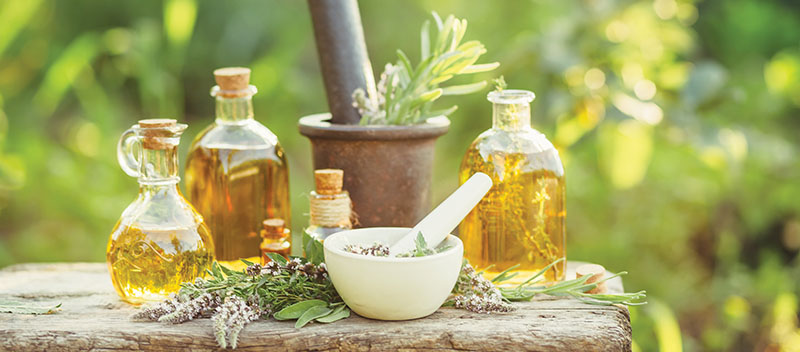The beauty industry is quick to point out what’s new, innovative, and “guaranteed” to make us more gorgeous. But before there were modern-day emulsifiers, preservatives, thickeners, artificial colors, and fragrances, there were ancient practices used by indigenous people from all around the globe that utilized nature in its simplest form to enhance their beauty and self-care rituals. Passed from generation to generation, these practices have withstood the test of time, and involve simple, healthy ingredients that can be found in your kitchen cupboard or your garden.
Here are some of my favorite beauty rituals from around the world, and the best part is, they don’t break the bank and they’re free of chemicals.
Facial Treatments
Ayurveda is an ancient lifestyle medicine from India and its mantra is that “beauty comes from within.” These 5,000-year-old self-care practices are designed to support the healthy functioning of your body. When you honor yourself and your body in this way, it is said that vitality will illuminate through you like Lakshmi herself, the goddess of beauty.
Some common facial treatments in Ayurvedic medicine include the following:
Rosewater comes from rose petals that have been steeped in distilled water, and when used as a facial toner, it has strong anti-inflammatory and hydrating benefits. You can spray rosewater on your face throughout the day to keep it refreshed. The scent of rose also elevates the mind and spirit.
Neem oil can be used as a spot treatment for acne or discoloration. Use a cotton swab to apply it directly to pimples or spots of minor inflammation and leave it overnight.
Aloe Vera isn’t just for sunburns. It makes the skin smooth, supple, and toned. It can be applied topically, like a toner or serum, underneath a moisturizer.
Dry Brushing for Body Care
Dry Brushing is another Ayurvedic practice that uses a natural bristle dry brush on your body. The mechanical action of dry brushing is excellent for exfoliating dry winter skin. It also helps detoxify your skin by increasing blood circulation and promoting lymph drainage. It has the additional benefit of stimulating your nervous system, which has an invigorating effect.
Starting with your feet, brush in gentle, upward, circular motions toward the heart. Make your way to your legs, torso, and arms. Then rinse off in the shower. Dry off and do some self-massage with your favorite oil, such as olive, avocado, coconut, almond, or sesame oil. Do not use dry brushing directly on skin that’s broken, which includes cuts, scrapes, lesions, sores, eczema, psoriasis, or burned skin. Stop the practice if the skin becomes irritated or inflamed.
Hair Oiling
The history of hair oiling can be traced back to many parts of the world. Research on mummies shows that ancient Egyptians used plant and animal fats on their hair, and in ancient Greece, women relied on olive oil to condition their luscious locks.
The Berber women of Morocco have been using Argan oil in their beauty rituals for thousands of years by applying it to their hair, as well as their face, nails, and entire body. Not only does Argan oil have a wonderful scent, but it is also loaded with rich antioxidants, vitamin E, and fatty acids. It can help make the hair shine, reduce the appearance of wrinkles, treat scars, acne, eczema, and psoriasis.
Ayurvedic medicine has a ritual known as Murdha Taila, which translates to “anointing the scalp with oil.” Indian women take great pride in their crowning glory, and for thousands of years, they have kept their tresses lovely with nourishing scalp oils made from coconuts, herbs, flowers, and spices. Some common ingredients include tulsi (Indian holy basil), hibiscus flowers, curry leaves, and fenugreek seeds.
Hair oiling and scalp massage promote thick, lustrous, healthy hair. Beyond the hair-fortifying aspect of it, this calming and relaxing practice is very grounding due to the many nerve endings on your scalp. Massaging the scalp can improve circulation and slough off dead skin cells, which is said to help hair growth.
Apply coconut or sesame oil to the crown of your head, working downward and outward with your fingertips. Massage your scalp using a pinching motion, bringing the fingertips and thumbs together, then releasing. Move hands forward and back, then side to side, covering the entire head. After the massage, comb the oil through your hair and leave it on for 30 minutes as you relax. For deeper conditioning, cover with a shower cap and leave it overnight. Gently rinse with a sulfite-free shampoo and finish with your typical hair care routine.
Soak it Away
It is said that Cleopatra’s most sacred beauty ritual was taking a bath with dead sea salt, aromatic flowers, olive oil, and milk. Bath soaks have been soothing muscle aches, destressing the mind, softening the skin, and lightening the mood for millennia. I have adopted my own Cleopatra bath ritual and no bath is complete without olive, almond, sesame, lavender, ylang-ylang, or eucalyptus oils, as well as Epsom or Himalayan salts. I still haven’t been courageous enough to pour milk in the tub, as Cleopatra did, but maybe one day.
Natasha Kubis is a licensed acupuncturist and certified yoga teacher.
For more information, visit acuwellhealth.com

